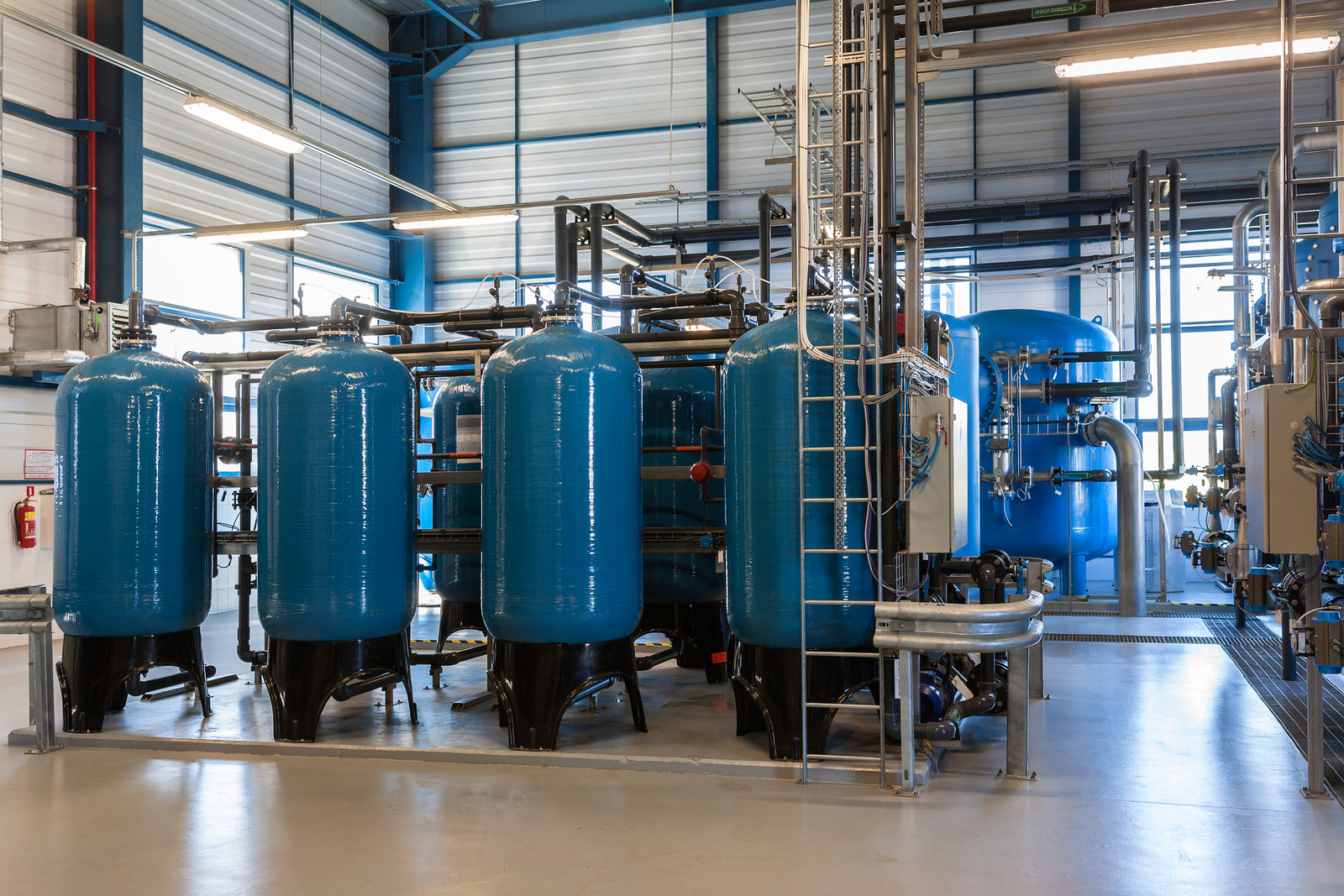Do water softeners remove chlorine?
April 12, 2021 0 Comments

Ion exchange resins are useful for many industrial water treatment and separation needs when utilized for suitable applications. In these cases, the technology can be highly efficient with relatively low cost and energy requirements. If they are properly maintained, resin beds can last years before requiring replacement, and for highly selective removal needs in process streams, ion exchange resins can prove ideal.
Despite the many benefits of using ion exchange resins in the appropriate separation processes, challenging issues can arise. In this article, we generally discuss a list of some “common problems with ion exchange resins and how to avoid them,” ensuring your facility can keep one step ahead and remain as productive as possible.
Resin fouling
When your ion exchange treatment system begins to require more rinsing, becomes more sensitive to temperature and flow rate variations, or exhibits a decrease in effluent quality and operating capacity at a quicker-than-anticipated rate, fouled resins could be to blame.
Over time, it is natural to lose some percentage of operating ability (which varies widely depending on the type of resin and application), but if fouling is suspected, there can be several causes.
Some of the most common resin foulants include:
- suspended solids such as silica, iron, and manganese, these can be particles or colloidal
- oils and greases
- bacteria and algae
- organic substances
Once resins are fouled, it can be difficult and risky to clean them as some of the chemical agents and methods used in these processes can degrade the resins, making them unusable. In general, caustics are used to remove foulants from anion resins, while acids or strong reducing agents are used to remove foulants from cation resins. Similarly, surfactants are typically used to clean oil from fouled resins, though it is necessary to use care in selecting a surfactant that will not itself foul the resin, and sometimes an aggressive backwash with air scour helps.
Organic fouling is both extremely common and can be difficult to correct, although using a brine squeeze on anion resin at elevated temperatures may be effective. Preventative strategies for organic fouling include prechlorination and clarification, activated carbon filtration, applying a multistep IX with weak and strong base resins, and use of specialty IX resins.
Generally, the best way to avoid resin fouling is to ensure proper pretreatment removes the foulants before they can become an issue in addition to using appropriate cleaning, storage, and regeneration measures in the day-to-day operation of the ion exchange system to make sure no problematic foulants will accumulate over time.
These procedures vary widely depending on the type of resin being used as well as the purity of the feed water, etc., so be sure to consult your water treatment specialist to learn the proper steps to keeping your resins suitably maintained.
Oxidation
When oxidizing agents—such as chlorine, chlorine dioxide, chloramine, and ozone—come into contact with both cation and anion resins under certain conditions, they can damage the resins, leading to capacity loss and inhibited performance. When present in a feed stream, oxidants degrade IX resin polymers, causing them to deform and compact over time. This compaction obstructs the flow of liquids through the resin bed, which can compromise the overall effectiveness of the IX unit, and lead to inconsistent effluent quality due to channeling in the resin bed.
While oxidation damage to IX resins cannot be reversed, it can be prevented through various pretreatment measures. Common preventative measures for oxidation degradation include application of activated carbon filtration, ultraviolet irradiation, or chemical pretreatment through the application of a reducing agent.
Oftentimes, the resin manufacturer will have specific guidelines on which resins work best in certain environments. Some resins are built to withstand these degenerative chemicals at certain levels (i.e., higher cross-linked cation resins in higher concentrations of chlorine), but in general, it is best to consult with your water treatment specialist and resin manufacturer regarding the maximum temperature and oxidizing agent exposure as certain combinations of chemicals and resins can result in potentially harmful byproducts, such as ammonia or nitrogen gas.
Thermal resin degradation
Extremely high or low temperatures can permanently compromise the effectiveness of IX resins. Over time, thermal degradation alters the resin’s molecular structure such that it is no longer able to bind with the functional groups of ions that are key to the IX reaction, resulting in compromised operational performance and shorter product life.
IX resin capacity has an inverse relationship with temperature, so it is important to consider the recommended operational temperatures and other process conditions to minimize thermal degradation over time. Generally speaking, cation resins are more resistant to thermal degradation than are anion resins, though both can generally withstand brief applications of high heat for occasional sterilization or other purposes. While prolonged exposure to extreme temperatures usually means a shorter useable life for IX resins, in some cases the costs of more frequent resin replacement may still not outweigh the costs of energy and equipment needed for temperature control.
Inadequate regeneration
Suboptimal IX system function can result when regenerant solutions are administered incorrectly. Sometimes regeneration methods yield varying results, even when they are implemented with the same procedure. Resin regeneration is a complex calculation, and the outcome often depends on the overall resin condition, regeneration process water quality, regenerant chemical concentration, flow rate, temperature, and contact time, to name a few. Both cation and anion resin can be scaled from improper regeneration. For example, regenerating with a too-high concentration of sulfuric acid can cause calcium sulfate scale on the resin. With some anion resins, silica can precipitate with improper caustic concentrations.
With all the possible scenarios, following the resin manufacturer’s guidelines for regenerant concentration, application time, and flow control can help prevent issues and is advisable.
Channeling
Channeling occurs when liquids pass through the resin unevenly, carving pathways that result in the uneven exhaustion of the resin, and breakthrough of untreated solution into the effluent stream. Channeling can be caused by incorrect flow rates, failure of the distributor mechanism, inadequate backwashing, and blockages by dissolved solids or damaged resin beads.
Resin loss or migration
Resin loss occurs when resin beads flow out of an IX column, or flow from one vessel to another. There are multiple causes for resin loss, including excessive backwashing and mechanical failures in underdrain screening or other resin retention equipment. Resin loss may also result from fragmentation of resin beads due to exposure to high temperatures, chlorine, and/or osmotic shock, allowing the resin particles to pass through even intact retention screens. Resin loss and migration reduces overall system capacity and efficiency. In demineralization systems, for example, the migration of cation resin into the anion unit can result in sodium leakage and excess rinse time.
Read original article @ https://www.samcotech.com/common-problems-ion-exchange-resins-avoid/
Also in Blog

Advanced Cooling Tower Management: Enhancing Efficiency with Lakewood Model 140
February 28, 2024 0 Comments

Optimizing Cooling Tower Performance: Understanding Efficiency, Maintenance, and Water Quality Management
February 28, 2024 0 Comments

Revolutionizing Water Analysis: Everything You Need to Know About the Kemio KEM10DIS
April 19, 2023 0 Comments



